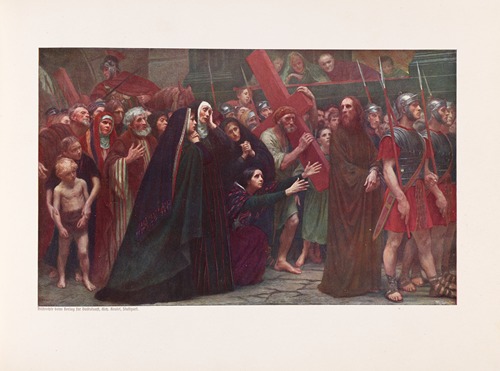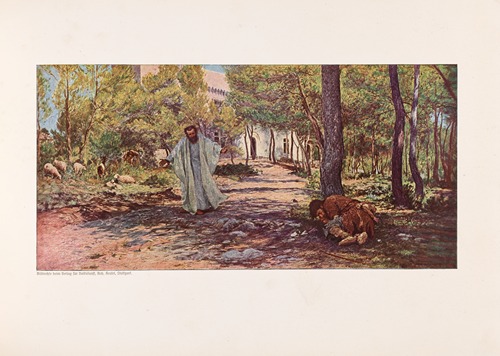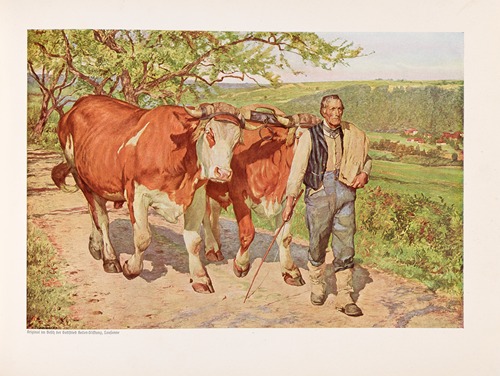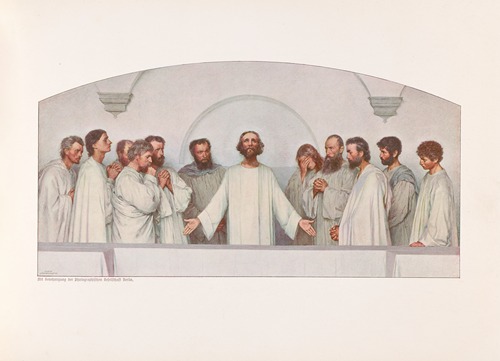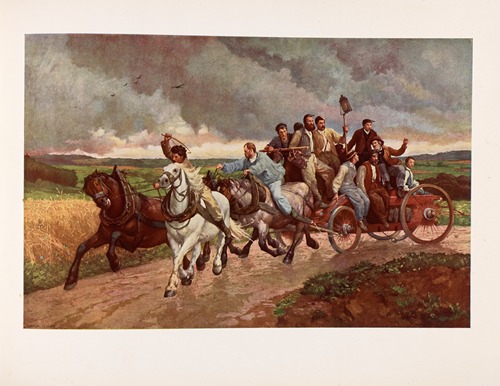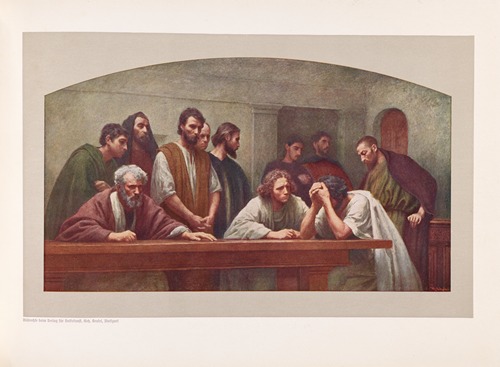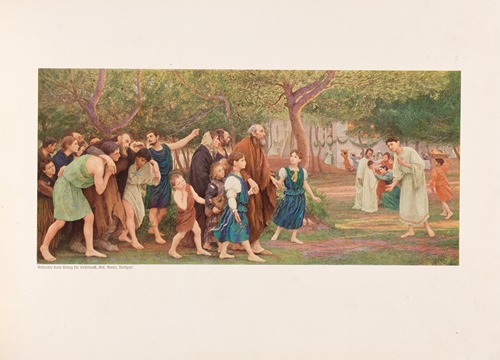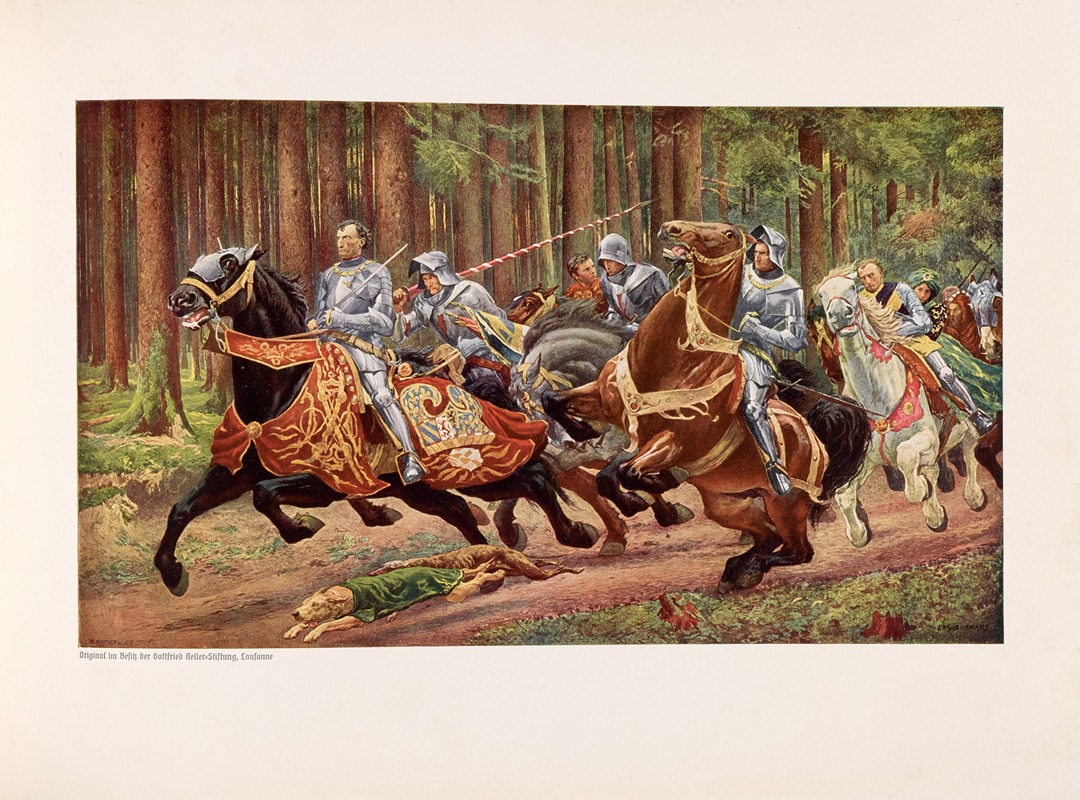
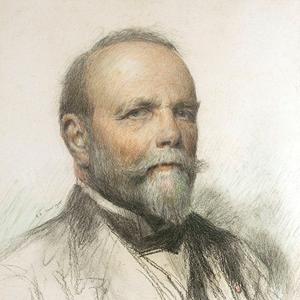
Eugène Burnand was a prolific Swiss painter and illustrator from Moudon, Switzerland. Born of prosperous parents who taught him to appreciate art and the countryside, he first trained as an architect but quickly realised his vocation was painting. He studied art in Geneva and Paris then settled in Versailles. In the course of his life he travelled widely and lived at various times in Florence, Montpellier, Seppey (Moudon) and Neuchâtel. His later years were spent in Paris where he died a celebrated and well respected artist both in Switzerland and France. He was primarily a realist painter of nature. Most of his works were of rural scenes, often with animals, the depiction of which he was a master. He increasingly painted human figures and by the end of his career could be called a portraitist whose skill revealing character was profound.
A deeply religious man, his Protestant beliefs led him to include more religious works that he put his stamp of realism on, and he became best known in Europe for his illustrations of "The Parables", that was published in French, German and English versions over four decades. His works are now widely distributed in museums and private collections throughout the world and in his own dedicated museum in Moudon. His final project was a series of 104 pastel portraits of allied WW1 participants of all nationalities that was incomplete when he died; a unique body of work that was subsequently published as a book in 1922 and recently republished in 2010.
Eugene Burnand was a good living family man who kept detailed records of his life and work that facilitate a thorough understanding of his methods and motives. He, his wife Julia and family of eight children, including two sets of twins, moved with him as his work took him around France and Switzerland. His traditional style ensured a conventional appreciation that he and his family enjoyed, but brought some criticism and conflict with contemporaries who were embracing modern art. Burnand was greatly influenced by artists such as Jean-François Millet and Gustave Courbet. This is reflected in perhaps his best known work, The Disciples Peter and John Running to the Sepulchre on the Morning of the Resurrection 1898, which hangs in the Musée d'Orsay in Paris.
